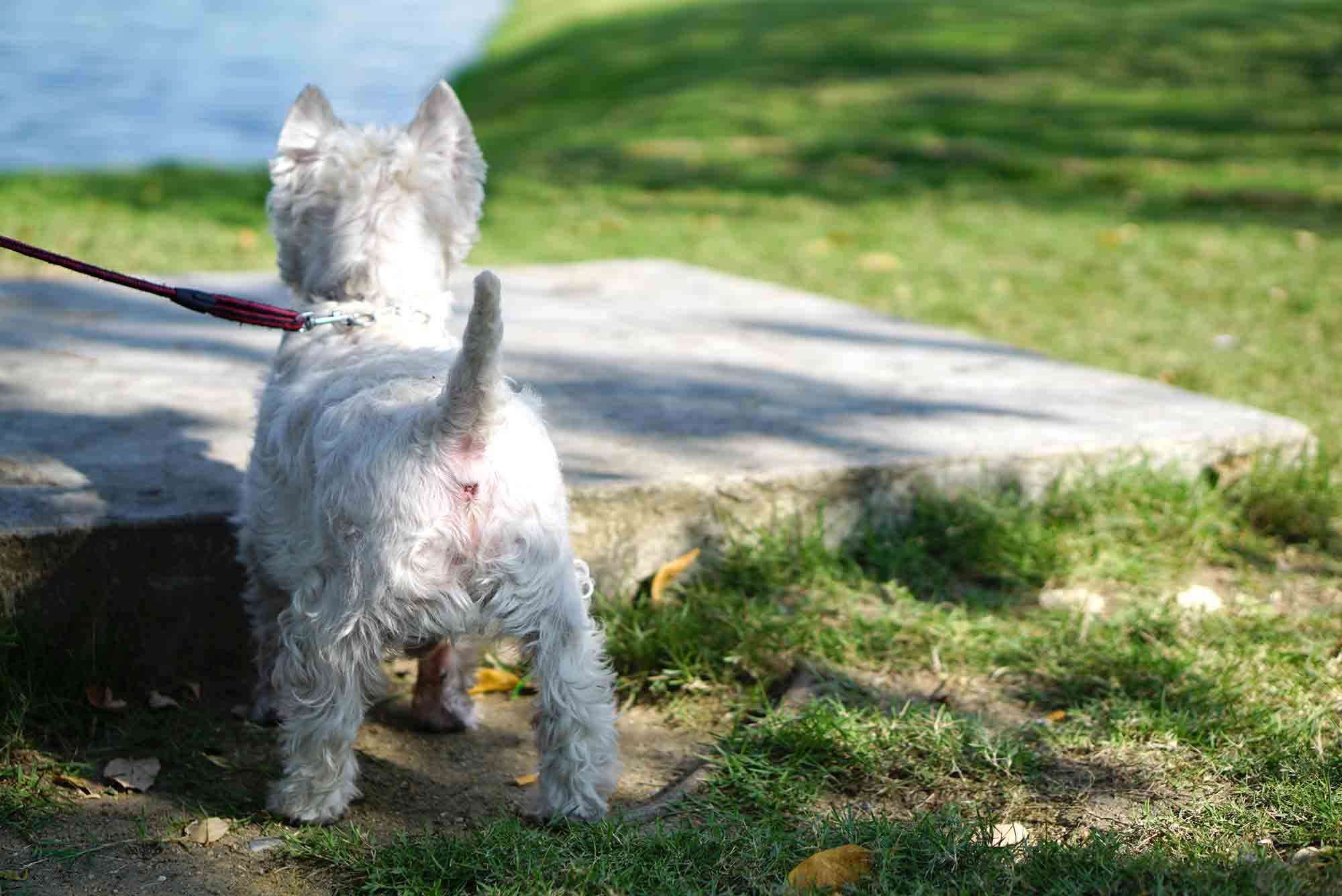Anal Sacs Can Really Bite You in the Butt
 Dog owners are pretty comfortable looking at their dog’s rear end, picking up feces, and generally staying on top of the poop schedule. This level of acceptance goes with the territory of dog ownership. However, if there’s one thing that makes an owner scrunch up their nose and look away, it’s the anal sacs. Tough to talk about? Maybe. Hard to express the sacs at home? Absolutely.
Dog owners are pretty comfortable looking at their dog’s rear end, picking up feces, and generally staying on top of the poop schedule. This level of acceptance goes with the territory of dog ownership. However, if there’s one thing that makes an owner scrunch up their nose and look away, it’s the anal sacs. Tough to talk about? Maybe. Hard to express the sacs at home? Absolutely.
What, Where, Why
Anal sacs are a pair of glands located between the sphincter muscles just inside the anus. The glands secrete oil and sweat that’s brown in color and quite smelly. Their unmistakable scent allows dogs to identify each other (sort of like marking territory), but another purpose is to smooth the exit of passing stool.
Their shape is short and narrow. If impacted and left alone, anal sacs can create uncomfortable – and even painful – problems for a dog.
A Closer Look
Anal sacs can fill up, and sometimes a dog is unable to discharge the fluid inside. This is where the famous “butt scoot” comes in. Typically, when a dog defecates, the anal glands release fluid to help move the stool out of the body. When the fluid remains in the glands, it can thicken, becoming impacted, inflamed, and then infected.
It’s also not unheard of for anal sacs to abscess and rupture, a condition requiring emergency veterinary care.
What’s to Blame?
Diarrhea that lasts longer than a day can lead to problems with the anal sacs. This is due to a lack of pressure on the glands from solid stool. Even without release, the glands continue to produce fluid, causing swelling and impaction over time.
No Fun
This is often very uncomfortable for a dog, but it’s not a stretch to say that impacted anal sacs are painful. It’s critical to empty the sacs to prevent an infection, a process that sometimes needs anesthetics, sedatives, antibiotics, and pain relief. Surgery is required in severe cases of blocked anal sacs.
Healthy Anal Sacs
We might discuss gradual dietary changes for your dog. A moderate increase in fiber can help, but we may consider protein choices, as well.
Increasing the frequency of exercise and maintaining a healthy weight also reduce risks associated with your dog’s anal sacs.
If any of these symptoms are present, we recommend an examination:
- Persistent diarrhea
- Dragging the rear end on the carpeting
- Excessive self-grooming of the rear end
- Abnormal tail position
- Decreased bowel movements or any display of reluctance when defecating
- Swelling near the anus
While anal sacs may never be a problem for some animals, many dogs rely on routine veterinary assistance to inspect, drain, and treat issues associated with the anal glands. If you have any questions or concerns, we encourage you to call us.
